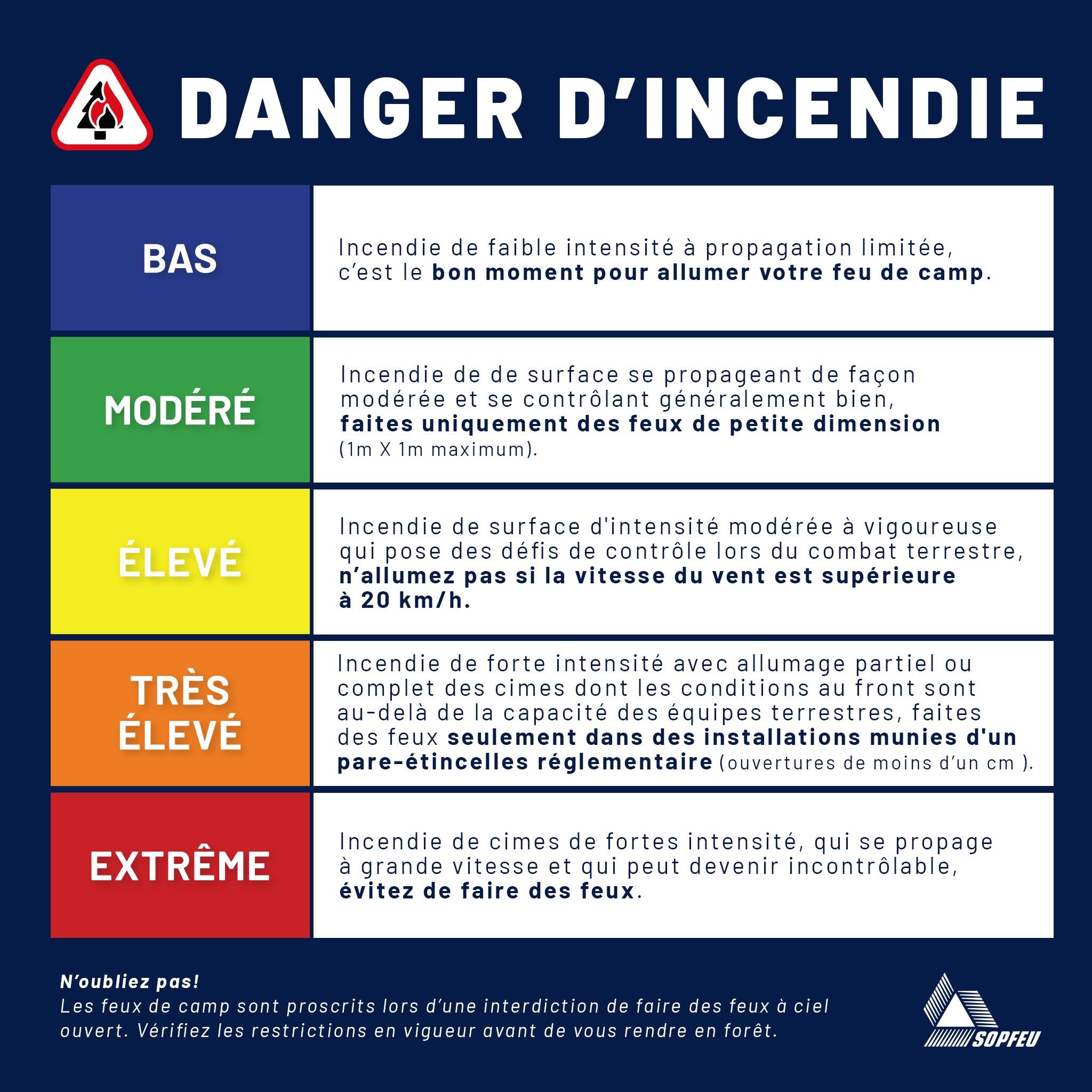Forest fires
Forest fires in Quebec are a burden on several sectors. In order to mitigate negative effects, consultation and collaboration between all stakeholders is essential.
A number of adaptation measures can be taken, such as rethinking the sustainable management of forest land and developing better methods to prepare for, manage and fight fires. Individual preventive measures can also limit the risks.
Sustainable forest management
Various forest management techniques can be adopted by stakeholders in governments and industry to reduce risks. These include methods such as:
-
Wildfire fuel management, i.e. the use of mechanical equipment to create physical infrastructure, such as firebreaks, to help prevent the spread of fire
-
Thinning stands by planting trees less densely
-
Assisted migration, i.e. planting southern species further north
-
Conversion of forest stands by encouraging the planting of species less vulnerable to fire
-
Containment of urban sprawl, i.e. the creation of firebreaks near at-risk municipalities
Individual measures
Several actions can be taken at individual level. The Ministère de la Sécurité publique recommends various steps to take before, during and after a forest fire.
Visit its website to learn more.
Pour en savoir plus
The Firesmart program offers a variety of strategies and solutions for land and vegetation management, effective infrastructure construction and maintenance, public education and communication, and wildfire response.
The Pare-FEU guide is an information document intended primarily for owners of camps and cottages in forests, as well as administrators of municipalities located near forested areas. The guide offers information on vegetation control, municipal bylaws, equipment to use, infrastructure layout and more.
Alerting and monitoring systems

The SOPFEU interactive maps provide daily maps of fire hazards, preventive measures and fire intensity in the province of Quebec. SOPFEU also provides users with the daily fire danger rating, which determines the daily risk of fire in a given region. Signs indicating the daily fire danger are placed in strategic locations, especially near popular recreation and tourism sites such as national parks.
The Québec air quality monitoring network provides access to data on ambient air quality in Quebec and helps limit the risk of exposure to forest fire smoke.
Reinforcing anti-wildfire capabilities
Another adaptation measure is to strengthen our capacity to respond to forest fires. This means having enough trained human resources and specialized equipment to deal with wildfire situations.
It’s important to anticipate and reinforce the current and future capacity in terms of human and material resources to ensure that Quebec adapts to the risk of fire, which will tend to intensify with climate change.